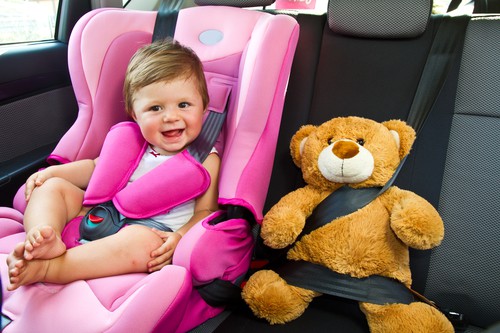Child Passenger Safety Awareness Week Is Sept. 20th to 26th
September 14, 2020
31% of Children Killed in Fatal Car Crashes in Texas Were Not Properly Restrained at the Time of the Accident
Are the kids you drive around properly restrained? Are you sure?
You may think a child’s car seat or booster seat is properly installed, but experts say that at least half of them aren’t. That’s alarming, especially considering that:
- Car accidents are the number one cause of death among children.
- Every 32 seconds in the U.S., a child younger than 13 is involved in a wreck.
- In Texas, more than 25% of children under 8 who are killed in crashes each year are not properly restrained when deadly wrecks happen. For victims 8 to 12, more than 37% aren’t restrained when fatal accidents happen. That’s an average of 31% of victims under 13 not being properly restrained at the time of a deadly crash.
While drivers may not be able to avoid these car accidents, they can take action to:
- Protect children: When car seats and booster seats are correctly installed, they can cut the risk of deadly injury by 71% for babies (under 12 months old) and by 54% for toddlers (between 1 and 4 years old). Similarly, buckling up reduces the risk of fatal injury by 45% and critical injury by 50%.
- Save lives: More than 1 in 3 children killed in car accidents were not properly restrained at the time of the crash. While proper use of restraints for children saves more than 300 lives each year, experts say that nearly 50 others could be saved if children were properly secured in vehicles.
To raise awareness about child passenger safety, officials at the National Highway Traffic Safety Administration (NHTSA) and the Texas Department of Transportation (TxDOT) promote Child Passenger Safety Awareness Week each year in September. The 2020 campaign will run from Sept. 20th through 26th.
7 Ways to Participate in Child Passenger Safety Awareness Week
Join the effort to keep kids safe in vehicles by observing Child Passenger Safety Awareness Week in the following ways.
1. Refresh your knowledge of child car seats.
The safest way for kids to ride in cars varies by age and size. This table shows the NHTSA’s recommendations for types of seats and orientation, by age.
| Age | Recommendations |
| Under 12 mos. | Rear-facing car seats in the backseat |
| 1 to 3 years | Forward-facing car seat in the backseat |
| 4 to 7 years | Booster seat in the backseat |
| 8 to 12 | Seatbelt restraints in the backseat |
Also, safety officials strongly recommend that drivers transporting children keep them in the:
- Recommended car seat (and orientation) until they reach the maximum weight or height limit, according to the manufacturer
- Backseat until the age of 13, as a deploying airbag has the potential to seriously harm children 12 and under.
Use this NHTSA guide for reference as children grow up. It includes a tool that can help you find the right type of car seat, based on a child’s age and size. It also provides up-to-date info about child car seat ratings.
2. Get a child seat safety check.
Get a child car seat inspection near you (these are usually free). Police departments commonly provide these inspections, and you can use this search tool to find the nearest inspection spot near you.
This quick and easy check can help you verify if a child car seat is truly installed properly. It can also be a good time to get the latest info on any new safety recommendations that you should be aware of.
3. Register child car seats and booster seats.
Register car and booster seats with the manufacturers so that you will be notified of any future recalls associated with these seats.
You can simply send in the registration card that came with the seat or register it online at the manufacturer’s website. You can also sign up for child car seat recall notifications from the NHTSA here.
4. Check for recalls.
Use this tool to see if any used child car seats have been recalled in the past. Do this before you start using them. A simple check can alert you to potential problems with a car seat and how to get them fixed. It can even help you avoid selecting a dangerous option that could put your kid(s) at risk.
5. Talk to children about passenger safety when riding in vehicles.
As children grow, discuss vehicle safety with them. Teach them the basics of passenger safety and seatbelt use to help ingrain these habits at an early age.
Also, lead by example. Practice what you preach by always buckling up, whether you’re driving or not.
6. Donate a car seat or booster seat.
If your child has aged out of a rear-facing, front-facing, or booster car seat, donate it to a local charity. Consumer Reports has put together this helpful tool that parents can use to determine whether they should reuse, donate, or recycle old child car seats.
7. Spread the word.
Share a link to this blog on social media to help get the word out about Child Passenger Safety Awareness Week. A single post may get the message out to someone who really needs it—and that could help save young lives.
